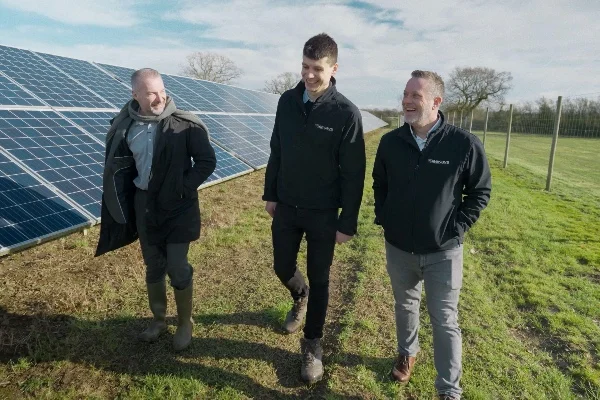Any footy fans would have been reassured last month when Ed Davey, Secretary of State for Energy and Climate Change, announced the lights would stay on in the unlikely event of England reaching the final. This is despite the fact that a World Cup Final this summer – with England in it – could have overhauled the record for a domestic electricity demand surge ‘of any kind’. Davey went on to add that energy security ‘doesn’t just happen by accident’, and that intervention is necessary as government, industry, scientists and plenty of others work in partnership.
So what kind of ‘intervention’ are we talking about? ‘Demand-side balancing measures’ for 2015-16 will reward volunteer businesses that, if called upon, reduce the amount of electricity they draw from the grid during peak hours. The cost of getting businesses to close down will be passed on to the taxpayer, but the National Grid reportedly expects the measure will add no more than £1 to the average annual household power bill.
The hope is that the increasing threat of blackouts – particularly during harsh winters – will be minimised through an approach that’s much cheaper than building new power stations to supply demand. At the same time, Davey acknowledged that ‘we must ensure that all our energy is increasingly low carbon.’
Despite its track record on the environment and its worryingly unflinching stance on fracking, the government is injecting money into technologies and solutions which should, in the long term, reduce our reliance on fossil fuels.
‘With government running over a five-year cycle, the ability for rapid change is hampered. In order for new technologies to achieve any chance of success, schemes like the fit and rhi cannot be influenced by the political process.’
Anthony Morgan, CEO of Newform Energy
So the penny has finally dropped: the UK government has realised that a shift in focus from financial services to manufacturing could be the key to success and economic recovery. We need to make things in order for the economy to survive; there’s still lots to do – homes need to be built, the energy infrastructure needs to be improved – and the work required would create jobs and increase revenues for the government as we move towards a new low-carbon economy.
So far so good? Here comes the but: the taxpayer funds these investments through schemes like DECC’s Entrepreneurs Fund – a £35m programme to support the development and demonstration of ‘novel, innovative technologies in a broad range of technology groups across the energy efficiency, power generation and energy storage sectors.’ The fund is aimed at small and medium enterprises (SMEs), and organisations can bid for up to £2m to develop and demonstrate ‘innovative technologies’ and receive advice from experts on how to bring their products to market. These technologies often take years and millions of pounds to develop, but once they’re ready for market they have to compete side-by-side with far more established solutions – completely unsupported.
There is no mechanism to provide support while the rough edges are sanded off and the company enters the transition phase between research and development and established product. This tends to be an expensive period in a product’s transition to the mainstream; unless the product is either backed by big business or supported by government, the product stands little chance of succeeding.
Once the product has been developed with the aid of government funding and is ready for commercialisation, one option available to the company is to sell the concept to big business. However, it’s generally not in the interests of a big business to adopt technology outside its own product sets; it poses a risk and could potentially displace existing technology that the company has a vested interest in bringing to market. In order for the products to get beyond this point and to have value to bigger companies, the technology must be clearly demonstrated and largely free of risk.
Another option is to rely on support from the government; schemes like the Renewable Heat Incentive (RHI) and Feed-in Tariff (FiT) are valuable when it comes to driving down costs and providing the level playing field required to allow products to enter the mainstream. We can see the effect FiTs have had in reducing the cost of solar PV over the last few years, but in order for a new technology to become adopted by these schemes it must either be recognised by the steering committees that influence the decisions of what is included and what’s not, or have a large enough deployment for DECC to evaluate the appropriateness and efficacy of the technology.
Generally the steering groups are made up of competitors who are fighting their own corner and trying to protect their piece of the relevant pot of funding; if the technology is completely different there is not an appropriate committee to assist in the first place.
What is needed is a second stage of funding and a mechanism to line up innovators with clients (preferably in the public sector) and big business. This way the technology can be de-risked and an appropriate level of deployment can be obtained to provide the necessary evaluation of the technology. Essentially, those products that succeed through the R&D phase should progress to an ‘Innovation Fund: Part 2’ to help them get to market. Without this, all the well-meaning public funding that has been ploughed into the research and development of new technologies is being wasted as new cutting–edge products fail at the point of market entry.
The good news is that, despite all the delays and changes, there is now finally a mechanism in place to support the adoption of more established renewable heat. The Domestic RHI, which offers a financial incentive to homeowners making the switch to renewable heat, is in need of refinement – but with the right tweaks it should provide a stable framework to allow the sector to grow. According to DECC, the Domestic RHI paves the way ‘for mass roll out of renewable heating technologies in the domestic heating sector during the 2020s by building sustainable supply chains, improving performance, reducing costs and reducing the barriers to take-up of these technologies.’ Superb.
Companies like Newform Energy have forged their own path and ploughed money, time and resources into researching and designing solutions that could really put us on track to reach our goal of deriving 15% of our energy from renewable sources by 2020. The company developed a pioneering hybrid technology that combines solar thermal with photovoltaics (photovoltaic thermal, or ‘PV-T’), so homeowners and businesses could use one installation – that generates both heat and electricity – to cash in on both the RHI and the FiT incentives, reducing their power bills and their carbon footprint in one go.
 Play Video about This Rock Might Just Save The World
Play Video about This Rock Might Just Save The World Play Video about Play 2 hours of rock
Play Video about Play 2 hours of rock Play Video about Play 2 hours of brook
Play Video about Play 2 hours of brook Play Video about Play 2 hours of sheep
Play Video about Play 2 hours of sheep











































